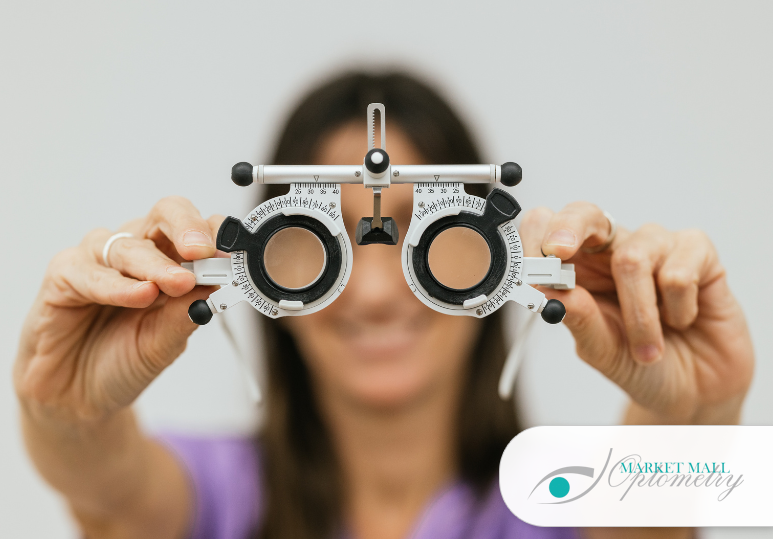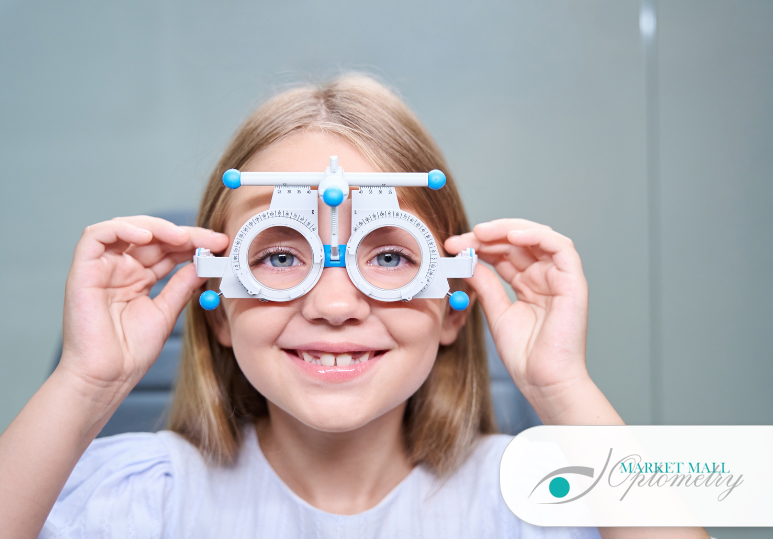Low vision, a significant reduction in visual function that cannot be fully corrected with regular glasses, contact lenses, medication, or surgery, affects millions of individuals worldwide. At Market Mall Optometry, we encounter many patients who navigate the challenges of low vision daily. Understanding low vision, its causes, symptoms, and diagnosis is critical in providing effective care and support.
At Market Mall Optometry, we believe in empowering our patients with knowledge about their eye health. Recognizing the early signs of low vision and understanding its causes and diagnosis can significantly improve management strategies and enhance the quality of life for those affected.
What Constitutes Low Vision and its Symptoms
Low vision is a condition characterized by a significant decrease in visual ability. It is not total blindness but rather a level of vision below what is considered "normal" (20/70 or worse on the vision scale). Symptoms can include blurred vision, difficulty reading or seeing up close, problems with glare, reduced night vision, and a loss of peripheral vision. These symptoms can drastically affect everyday activities like reading, writing, driving, and recognizing faces.
Common Causes of Low Vision
There are various causes of low vision, with some of the most common being:
- Macular Degeneration: This is the leading cause of vision loss, affecting the macula, the part of the retina responsible for sharp central vision.
- Glaucoma: Often called the "silent thief of sight," it primarily affects peripheral vision first and can lead to blindness if not treated.
- Diabetic Retinopathy: This condition is a complication of diabetes, where high blood sugar levels damage the blood vessels in the retina.
Other causes include cataracts, eye injuries, and inherited retinal degenerative diseases. It's essential to understand that these conditions can progress slowly and may not show symptoms until vision is significantly impaired.
Diagnosis and the Importance of Early Detection
Diagnosing low vision involves a comprehensive eye exam that assesses visual acuity, peripheral vision, depth perception, and the ability to discern colours. At Market Mall Optometry, our optometrists use specialized equipment and tests to evaluate these aspects thoroughly.
Early detection is paramount in managing low vision. Regular eye exams are crucial, especially for individuals at risk, such as older adults, those with a family history of eye diseases, and individuals with chronic conditions like diabetes. Early diagnosis can lead to more effective management of the condition, preventing further vision loss and improving life quality.
Understanding low vision – its causes, symptoms, and the importance of early diagnosis – is key to managing the condition effectively. At Market Mall Optometry, we are committed to providing our patients with comprehensive care and the latest information on low vision. We encourage anyone experiencing vision changes or those at risk to schedule a comprehensive eye exam. Early detection can make a significant difference in preserving vision and maintaining independence.
Low vision can be challenging, but with the right strategies and support, individuals can continue to live full and productive lives. If you or a loved one is affected by low vision, remember that resources and assistance are available. At Market Mall Optometry, we are here to support you every step of the way, from diagnosis to management. Let's work together to understand and tackle low vision, ensuring the best possible outcomes for your eye health.
Written on behalf of Market Mall Optometry.
FAQs
Q. What is Low Vision?
A. Low vision is a visual impairment that cannot be fully corrected with standard eyeglasses, contact lenses, medication, or surgery. It significantly hinders a person's ability to perform everyday activities and falls below a standard visual acuity of 20/70.
Q. What are the Common Symptoms of Low Vision?
A. Symptoms of low vision include blurred vision, difficulty with fine detail, trouble with glare, reduced night vision, and loss of peripheral vision. These symptoms often impact activities like reading, driving, and recognizing faces.
Q. What are the Main Causes of Low Vision?
A. The leading causes of low vision include macular degeneration, glaucoma, and diabetic retinopathy. Other causes can be cataracts, eye injuries, or genetic conditions affecting the retina.





